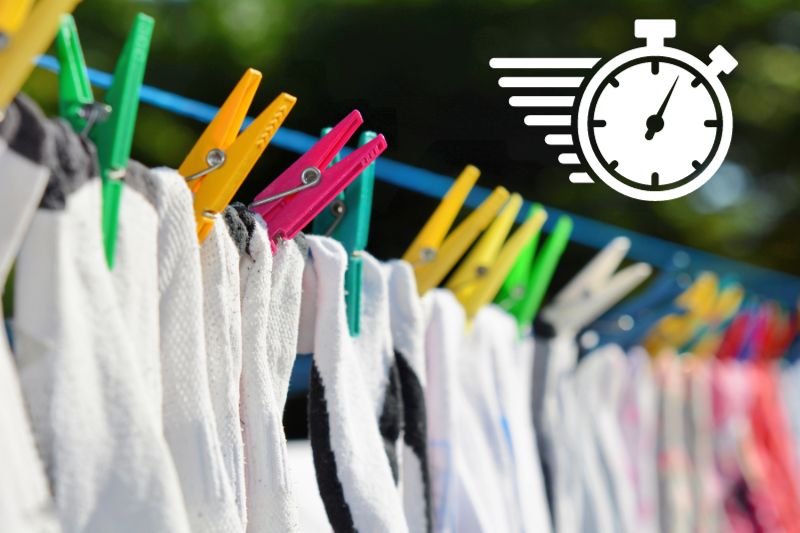Drying clothes outside might take longer than using a tumble dryer, but it’s completely free and much better for the environment.
Of course, if you’re washing a few loads in a day, you’ll need your washing line to be free as soon as possible.
This leads us to ask, how long do clothes take to dry outside? Well, this is what we’ll discuss below by looking at the factors that influence drying time.
How Long Do Clothes Take to Dry Outside?
Clothes can take as little as 2 hours to dry on a line outside in the right conditions.
Ideally, you want it to be warm and sunny with a dry breeze. These are the best clothes-drying conditions.
However, if it’s cool and still, your clothes could take 6-8 hours to dry on the line outside.
As you can probably guess, there are three main factors that influence how quickly your clothes dry outside. These are:
1. Sunlight
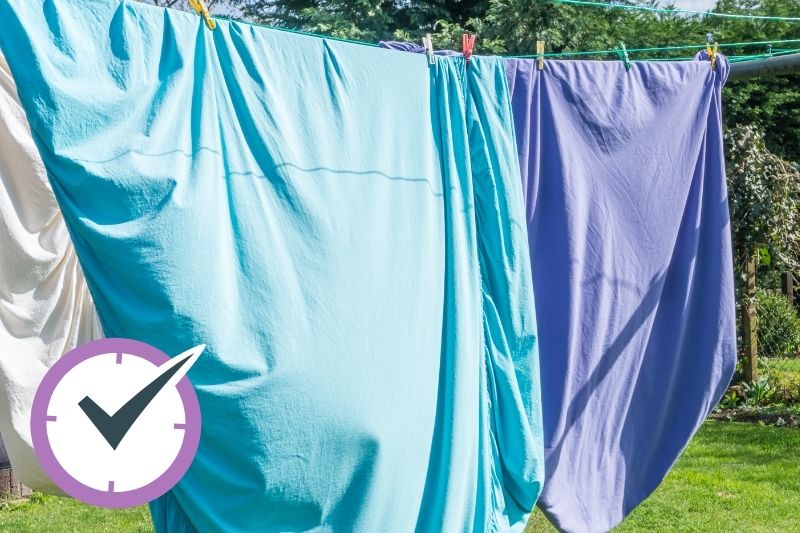
Sunlight helps your clothes dry quicker because UV light causes water to evaporate more efficiently.
To an extent, UV light can help kill bacteria, too, but this isn’t typically the case when you hang your clothes on a washing line.
Sunny days are objectively best for drying clothes, but you can still dry your clothes on an overcast day, it’ll just take longer.
2. Wind
Wind is probably the most important factor when it comes to drying clothes outside. A sustained breeze of 8-12 mph is great for drying clothes.
You can obviously hang them out on windier days, but this increases the chances of your clothes folding back on themselves (causing creases) or blowing off the line.
Wind helps dry clothes because it helps detach the water molecules from the fibres more easily.
It can also help reduce the relative humidity around the clothes, meaning evaporation is faster.
You can still dry your clothes on a still day, but you’ll find they take a lot longer. To help speed things up, flip them over after a few hours to dry the underside.
3. Temperature
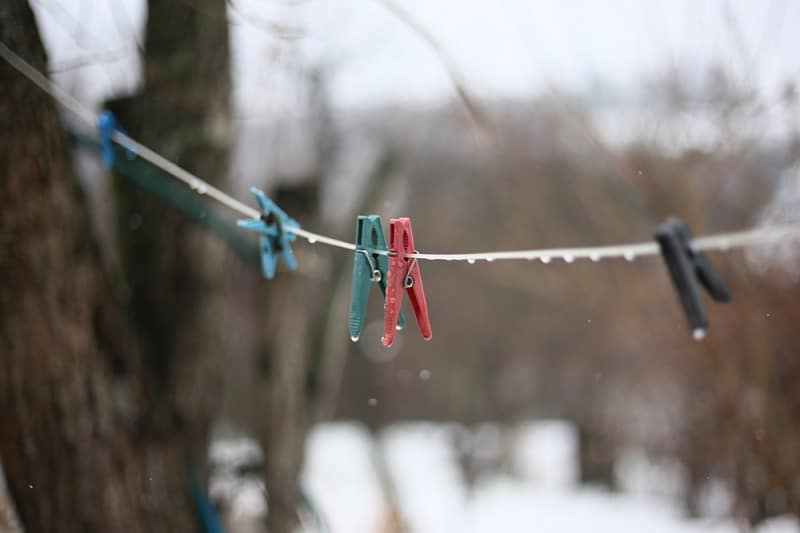
Temperature is the final important factor for clothes-drying time outside. Warmer air can hold more moisture, meaning your clothes will dry quicker.
That said, you can absolutely still dry your clothes outside in the winter.
Air temperature is perhaps the least important of these 3 factors. Provided it’s a sunny, breezy day, you can dry clothes outdoors in winter. It’ll take longer than in summer but it’s completely possible.
Cloudy days can often feel warmer than clear days (if you discount direct heat from sunlight).
However, the warm air that gets trapped by clouds can often be quite humid, meaning your clothes won’t dry very quickly.
Other Factors that Influence Drying Time
Although the three factors above are the most important when it comes to drying clothes outdoors, there are other things to consider:
Humidity
Humidity isn’t one of the main factors because it’s relative to windspeed, sunlight, and temperature.
You want lower humidity for your clothes to dry quicker, which typically happens on clear sunny days.
However, you can dry clothes in 90% humidity; it’ll just take a very long time. The best humidity for drying clothes outdoors is less than 70%.
Washing machine spin speed
This should be fairly obvious, but try to set your washing machine on the highest spin speed if you want to dry clothes outdoors.
Doing so means your clothes will be as dry as possible before you hang them out, so the whole process will be faster.
Time of day
Ideally, you should aim to hang your clothes out in the morning so they can dry during the warmest part of the day.
However, nothing is stopping you from leaving them outside overnight, although they might get a bit damp in the morning dew.
If you’re drying clothes during the colder months, you should aim to have them out by 10 am at the latest. This should give you time to get them in before it gets dark, and they should be pretty dry.
Type of washing line
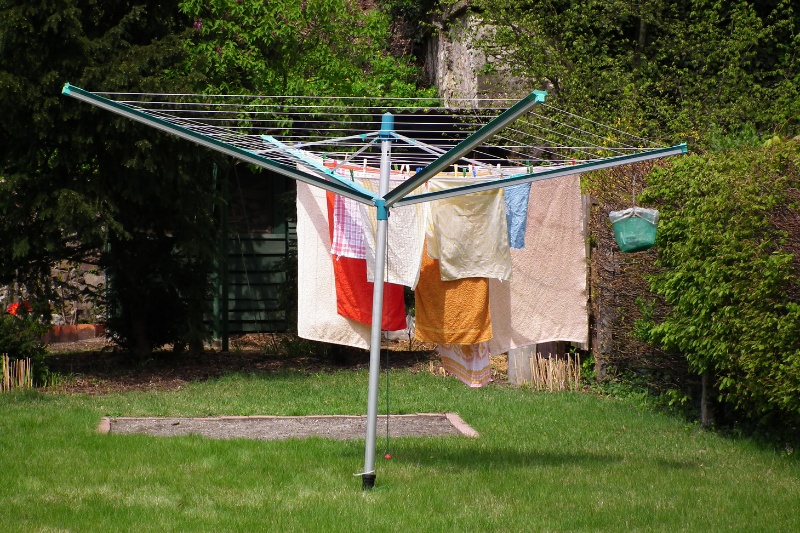
The best type of washing line for maximising exposure to sunlight and wind is a straight one.
Straight lines mean better efficiency because every item is exposed on both sides, giving plenty of evaporation area.
Of course, this isn’t always possible. A rotary washing line is the next best thing, but expect items on the inside to dry slower than those on the outside.
To avoid this becoming too much of an issue, hang small things in the middle, as they usually take less time to dry.
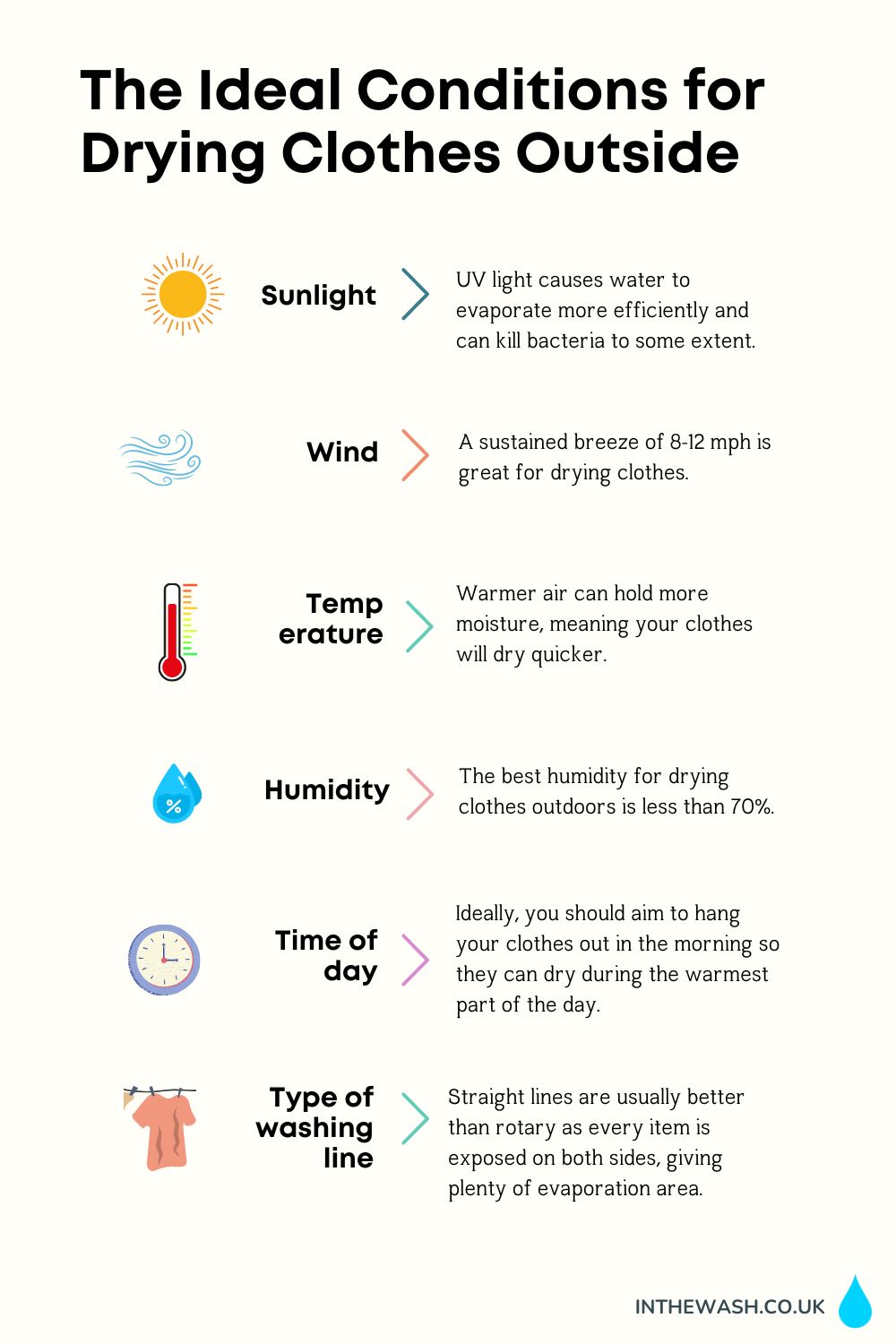
Final Thoughts
One of the best things about drying clothes outside is that it’s fairly passive. Once you’ve hung everything out, you can just leave it alone until it’s dry. Luckily, this is possible any time of year, provided it’s not raining.
A good rule of thumb is that, as long as the ground is dry, you should be fine to hang out your clothes.
Granted, they’ll take longer to dry in the colder months, but it’s still cheaper than running a tumble dryer!

Jacob is a writer based in Wales, where he lives with his partner and two dogs. All his work is fuelled by extensive research and buckets of coffee.
